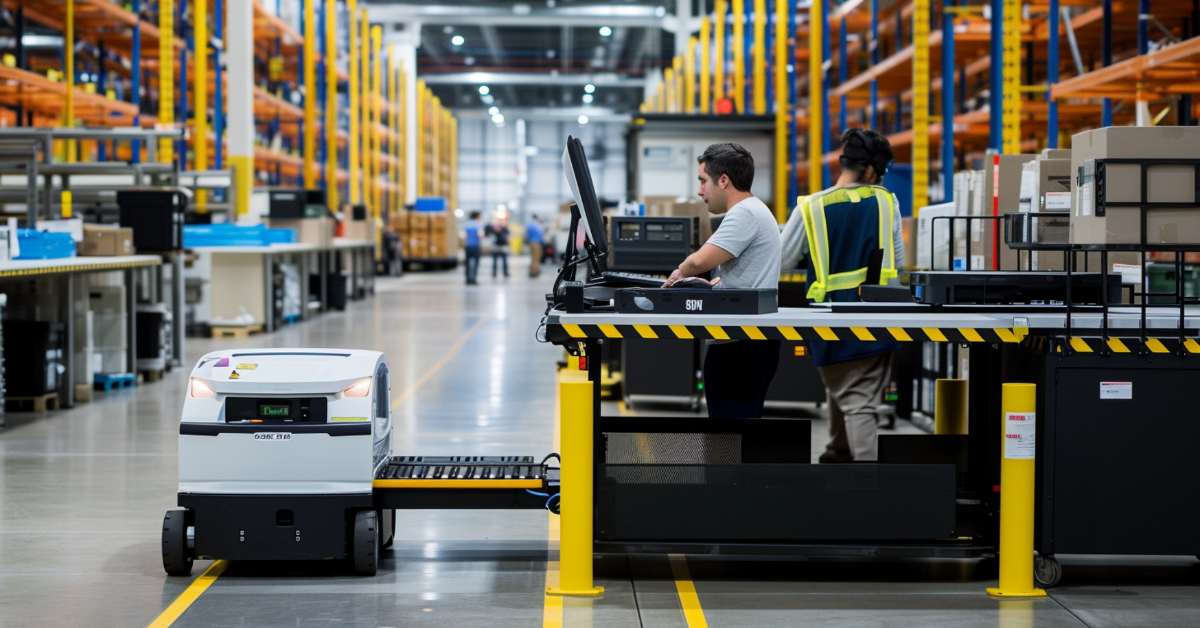Every robotics company wants its customers to be successful—it improves their reputation, and, more importantly, it means successful customers will keep coming back from more. “Customer Success,” however, is something more specific… but it’s still something every company should care about, especially those seeking to push boundaries with cutting-edge automation.
But what is it, exactly? And why is it important?
Customer success is a specific set of behaviors and processes that put the customer’s goals at the center of your organization. Companies delivering excellent customer success experiences partner deeply to understand the customer’s situation, environment, requirements, and more before working side-by-side to meet them. As a company’s customer success capabilities mature, customer success becomes more proactive, anticipating issues or questions and offering information and tools before customers know there’s a need.
Customer success vs customer support vs customer success stories
Customer success might sound like customer support upgraded into more positive, customer-obsessed lingo. While related, they have some key differences:
- Customer support is reactive, whereas customer success is both proactive and reactive.
- Customer support does not require knowing or understanding your customer’s business, goals, or challenges, just the specific product or service issue at hand.
Customer support and customer success work together to produce happier customers and, with some work, produce a treasure trove of insights for the product management team to mine.
Many vendors highlight case studies of how customers use their products, which are sometimes called “customer success stories.” A well-developed customer success team may play a role in developing those case studies, but simply having a case study page called “customer success” is not the same thing as having a dedicated customer success function.
Why is customer success so critical in robotics?
Every company should invest in a customer success role, but this especially applies to robotics companies due to several market quirks.
Robots are increasingly sold as a service, making the imperative to stem churn even greater
An early barrier to robot adoption was the necessary capital investment for a product customers had never used before and evolved so quickly that it was rapidly out-of-date. Savvy entrepreneurs removed this obstacle by offering robots-as-a-service (RaaS), where customers don’t buy the hardware but instead pay a monthly fee to use the robots and maintain them.
While the RaaS model has accelerated adoption, it also makes it far easier for customers to end the relationship. High customer turnover—even when you have plenty of new clients—means churn, which burns up margin. Unlike a software-as-a-service vendor who just has to turn on and off access, RaaS providers invest significantly in customers, counting on recouping that outlay over time via monthly fees. Customer success is an investment to ensure customers realize value and stay highly likely to renew and expand.
Change is never easy and big changes are especially challenging
The bigger the change, the bigger the resistance. Introducing robots can generate fears of replacement by or comparison to a robot. Skeptical senior management may view a robotics pilot as incredibly risky because the value remains unproven. Robotics’ emerging nature means there isn’t a well-trod and lit path to follow.
As the market grows beyond pioneering early adopters, robotic solution vendors must demonstrate that their expertise and processes will light the way. Customer success uses your company’s experiences and history to establish best practices and avoid common pitfalls to ensure a successful implementation.
Getting more projects out of pilot and into full-scale operations
Customer success teams help form those close client relationships to understand what the customer really wants. A customer saying they want robots to deliver products throughout a warehouse that neglects to mention people are also on the warehouse floor might conclude robots can only operate at night when no people are on the floor.
A customer success professional working closely with the customer will identify the issue early on and develop alternatives that deliver additional value and dispel any false perceptions. This kind of in-the-field partnership and troubleshooting beyond just technology is often needed to amplify the solution’s value and accelerate roll-out decisions.
Growing and expanding existing customer relationships
The best customer success professionals bond with their customers. They can see things from their perspective, determine how the robot provider can help, and use that information to help the customer, building trust and growing the relationship.
For example, a warehouse operator might say they want to grow, but what does that mean? Additional sites around the country? Enlarging the current site? More employees in the same footprint?
Customer success professionals have the potential to help customers plan for the future, optimize existing investments, and find new tasks for robots to take on. Those collaborative actions drive renewals and expansions.
The growth of the customer success function in robotics
Customer success is a developed business function, as evidenced by the myriad of robotics companies that are hearing the call; there are customer success roles at Amazon, Fox Robotics, and Cobalt Robotics, among others.
Locus Robotics, a provider of heavy-duty warehouse robotics solutions, has developed a customer success program. The program begins with a structured and detailed planning and deployment phase. Optimization extends through the customer’s training period, and ongoing updates and improvements are designed to ensure customers meet their operational and strategic goals for warehouse robotics solutions.
At Formant, Customer Success is an integral part of the customer experience, with an assigned Customer Success Manager (CSM) serving as a primary point of contact and trusted advisor. From partnering on strategic plans that fit customer goals to quickly resolving issues, we value Customer Success as a key element to helping our users succeed and bridging the gap between humans and autonomy.
Customer success in robotics is here to stay, and a critical element of how robot providers can drive greater adoption, and most providers provide customer success services without even realizing it. Proactively applying a customer success lens to customer needs impacts the bottom line, no matter what you call it.



